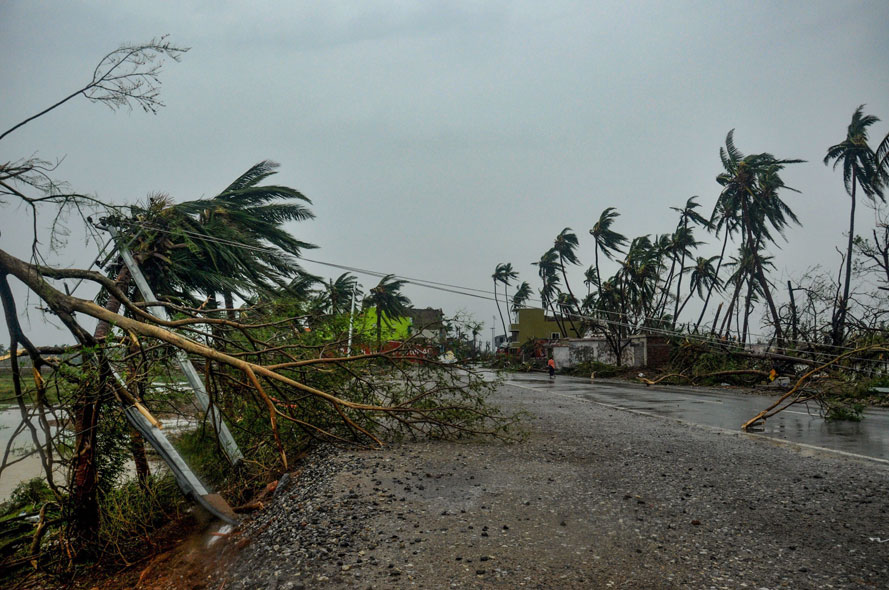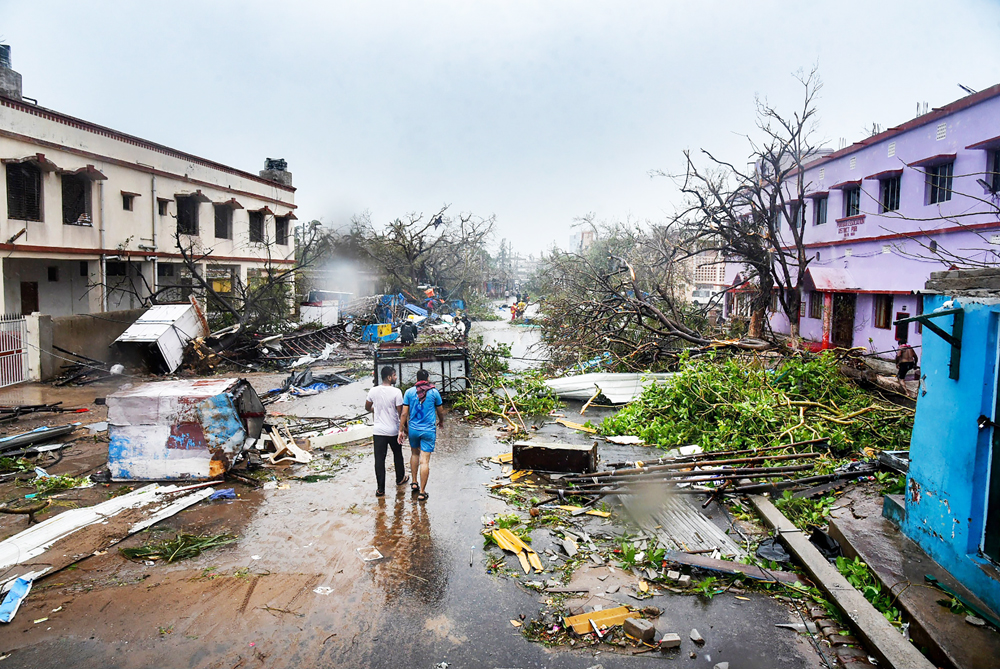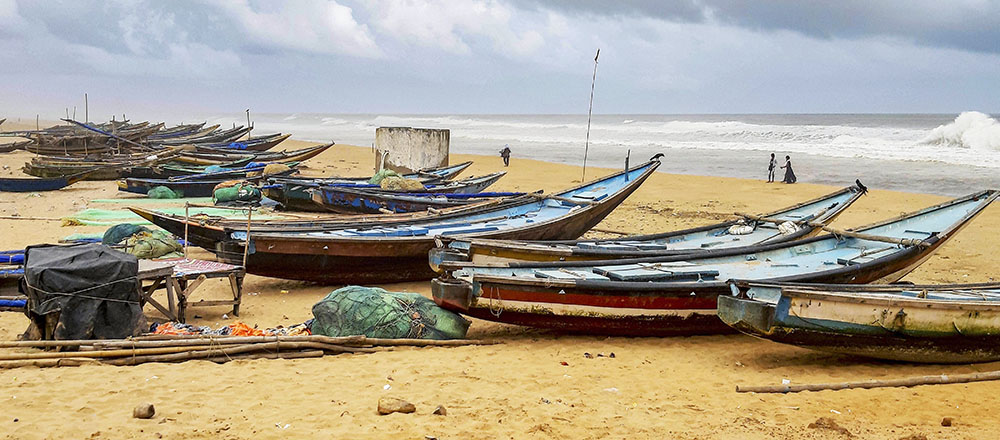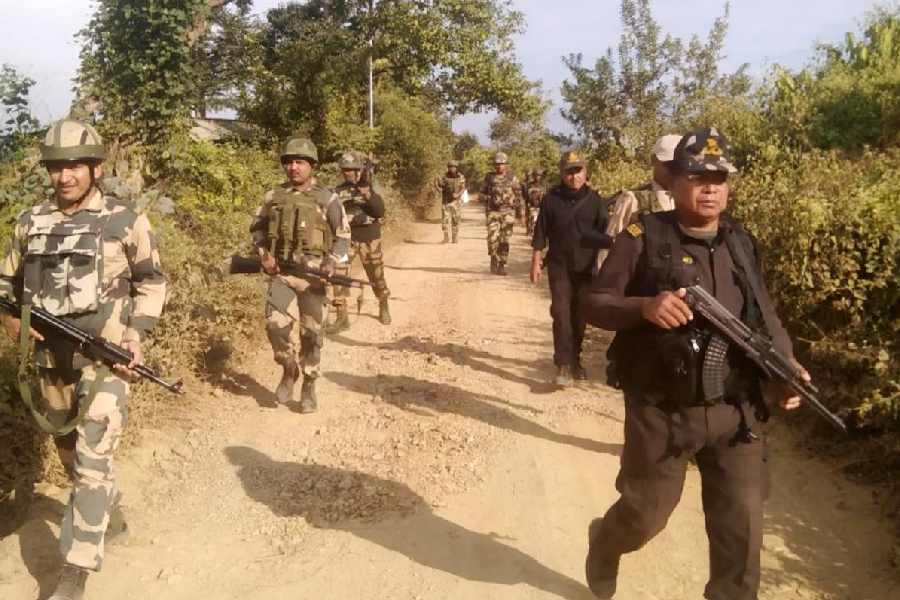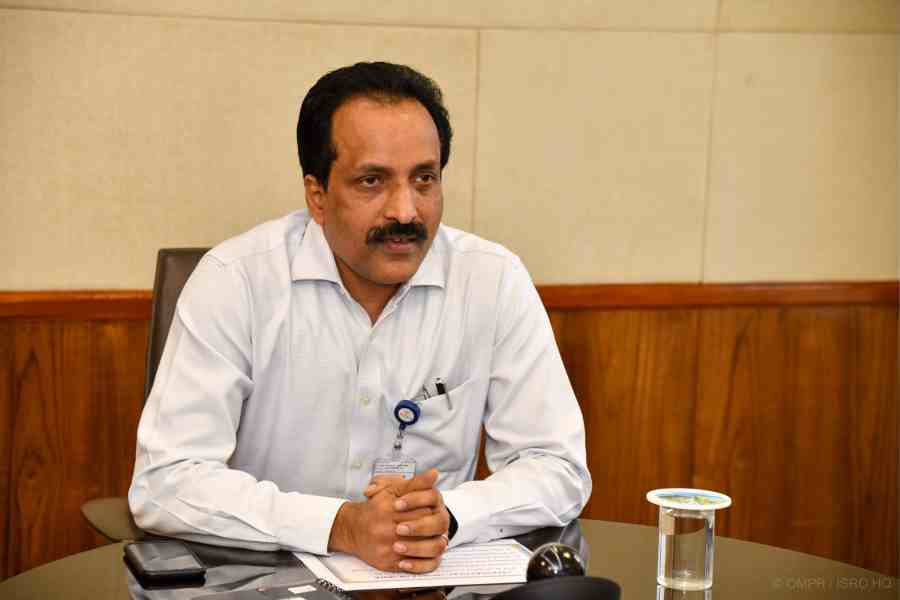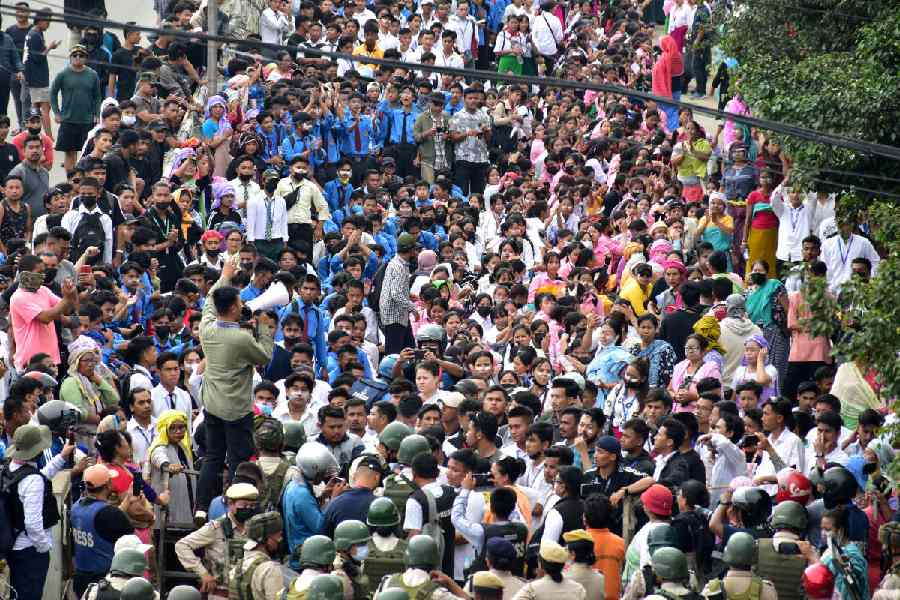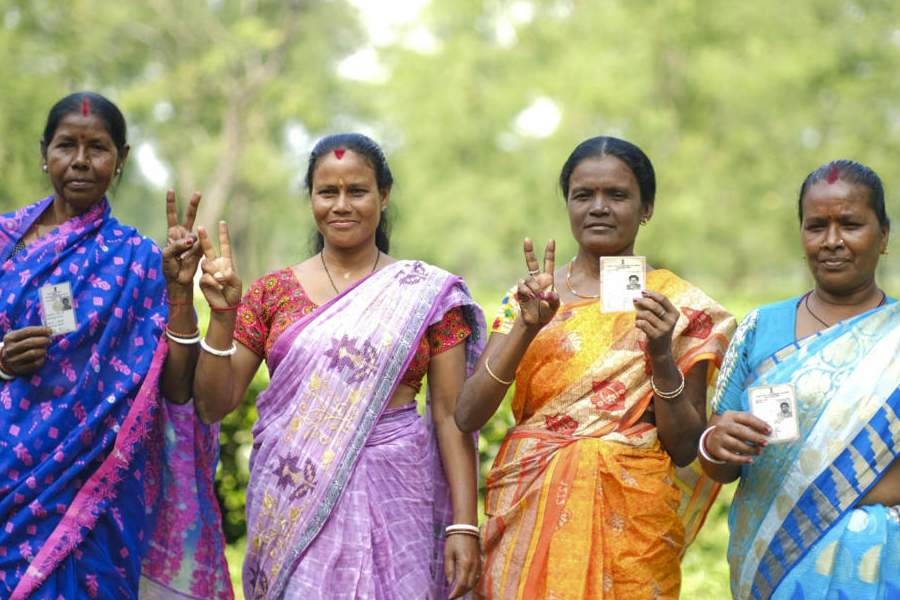A day after the 'rarest of rare' summer cyclone Fani ravaged parts of Odisha, killing at least 12 people, a massive restoration-and-relief work was launched on war-footing on Saturday across 10,000 villages and urban areas, officials said.
The extremely severe cyclonic storm, which made landfall at Puri on Friday, unleashed copious rain and windstorm that gusted up to 200 kmph, blowing away thatched roofs of houses, swamping towns and villages, before weakening and entering West Bengal, they said.
Around 2,000 emergency workers, along with civil society organisations, personnel of the NDRF, the Odisha Disaster Rapid Action Force (ODRAF) and one lakh officials, were engaged in the restoration work, Odisha Chief Minister Naveen Patnaik said in a statement, before leaving for an aerial survey of the affected areas.
The death toll due to the calamity, which stood at eight on Friday, mounted to 12 with four fresh casualties reported from Mayurbhanj district, the officials said, adding that detailed information from many areas was still awaited.
All the four people were killed after uprooted trees fell on them at different places in Baripada, the emergency officer of Mayurbhanj district, S K Pati, said.
'This is a rarest of rare summer cyclone.... The first such to hit Odisha in 43 years and one of the three to hit the state in the last 150 years,' Patnaik said.
Prime Minister Narendra Modi, who, spoke to Patnaik and discussed the prevailing situation in the aftermath of Fani's landfall, is likely to visit the affected areas either on Sunday or Monday, CMO sources said.
The prime minister has assured continuous support from the Centre.
'Spoke to Odisha CM Naveen Patnaik Ji and discussed the situation prevailing due to Cyclone Fani. Assured continuous support from the Central Government ... The entire nation stands in solidarity with all those affected by the cyclone in different parts,' Modi said in a tweet.
The districts of Puri and Khurda were the worst-affected, the chief minister said, adding that Cuttack, Bhadrak, Kendrapara, Jagatsinghpur, Balasore, Mayurbhanj, Keonjhar, Dhenkanal and Nayagarh were also hit by the cyclone.
'In Puri and parts of Khurda, where the electricity infrastructure has totally been devastated, we have the challenge of having to set up the entire electrification afresh,' Patnaik said.
Though the 'extremely severe' cyclone weakened into a 'very severe' cyclonic storm in a few hours, it flattened houses with thatched roofs and kutcha houses, uprooted scores of trees, electric poles and mobile towers in coastal Odisha.
Hundreds of engineers and technicians were working to restore power supply, the officials said.
Work was on to restore road communication, thrown into disarray with thousands of uprooted trees blocking the way at innumerable places, Patnaik said.
The men and machinery of the NDRF, the ODRAF and the fire services swung into action and launched a massive restoration work to bring back normalcy, Special Relief Commissioner (SRC) B P Sethi said.
'For me and my government, every life is precious and we have worked with that goal. I would like to thank from the bottom of my heart all the volunteers, panchayati raj institution (PRI) members, officials and staff who worked tirelessly and selflessly to get around 12 lakh people to safety,' Patnaik said.
State Energy Secretary Hemanth Sharma said around 30 lakh power consumers were affected by the cyclone, which threw the electricity distribution infrastructure out of gear in most coastal districts.
The restoration work was on in full swing, he added.
Over 10,000 electric poles were uprooted or broken in Bhubaneswar, he said, adding that efforts were on to restore power supply in 25 per cent crucial sectors such as the airport, the railway station and hospitals.
Another 25 per cent work would be completed on Sunday and efforts were on to restore complete normalcy at the earliest, Sharma said.
The power network has been severely damaged in districts such as Puri, Khurda, Ganjam, Jagatsinghpur, Kendrapara and Balasore.
The Quick Action Team (QRT) of the premier naval training establishment, INS Chilka, was immediately deployed to provide emergency assistance in cutting and clearing trees in some areas, said an official.
A naval Dornier aircraft carried out an aerial survey and found extensive damage to vegetation at many places around Puri.
Large-scale inundation was observed at many places, particularly in the low-lying areas between Puri and the Chilka lake, the official said.
The chief minister said nearly 12 lakh people were evacuated and shifted to safer locations from about 10,000 villages and 52 urban agglomerations, 24 hours ahead of the cyclone, 'probably the largest such exercise at the time of a natural calamity in the country'.
The evacuees were accommodated in over 4,000 shelters, including 880 specially-designed cyclone centres, he added.
Cooked food is being served to them for free.
After the landfall, the cyclone passed through Khurda, Cuttack, Jajpur, Bhadrak and Balasore before entering West Bengal, the SRC said, adding that Bhubaneswar was hit by high-velocity winds of around 140 kmph.
Telecommunication lines got snapped in several parts of the state capital and other areas.
The summer crops, orchards and plantations also suffered a huge damage, he said.
Around 220 trains on the Howrah-Chennai route were cancelled in view of passengers' safety, an East Coast Railway (ECoR) official said.

